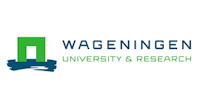EuroBIOCOR
European Biodiversity Corridors
- Deutsch
- English
- Italiano
- Project duration: -
- Project status: finished
- Funding: Private organisations (Other projects /Project)
- Institute: Institute for Regional Development
Almost all species need a variety of habitats to complete their life circle, in general foraging, breeding and sometimes wintering areas.
The structure of the landscape and vegetation is therefore very important for survival of species and define the suitability of a certain environment.
Especially in fragmented landscapes such as in Europe, barriers and hostile habitats pose a threat for species movements.
Species therefore need spatial connectivity, connections and corridors in the landscape for foraging, migration or dispersal. In the absence of safe corridors or connecting habitats movements are blocked, for example by human infrastructures (i.e., roads, settlements, industrial areas, dams etc.).
This may result in mortality of species, either directly (traffic) or indirect, if species cannot reach wintering habitats or feeding areas. Overall, this has resulted in a declining biodiversity, (mostly local) extinction processes for species.
Despite all evidence underlining the importance of landscape connectivity, actions so far have been mostly at local and regional scale, rarely have there been attempts to identify and implement trans-European ecological nature networks (TEN-N). This despite the fact that connectivity has become part of conservation policies, and is included in the EU Biodiversity Strategy and Bern Convention.
All over Europe projects have been done to improve connectivity. Thus far there has not been a concerted attempt, and only incidentally corridors and measures were developed across national borders.
The project EuroBiodiversityCorridors (EuroBIOCOR) addresses these shortcoming in planning of TEN-N and the implementation of conservation measures to enhance landscape connectivity.
Our vision is to establish and support a truly well connected protected areas network in Europe, of which the Natura 2000 network forms the backbone, but with many other natural elements and natural areas. This is achieved by improving connectivity in fragmented landscapes, developing corridors, taking into account the overall landscape and European connections.
This is done on a scientific basis, identifying best opportunities for enhancing connectivity and strengthening the network. Measures to improve ecological connectivity and permeability of the landscape, may include removal of barriers (highways, railways, canals).
Such conservation measures demand a strong social- and economic- focus. It requires involvement of local stakeholders from the start, through decision making to the implementation of measures. Acceptance requires sometimes also a balancing of human activities and the natural environment.
The aim of EuroBIOCOR is to:
- Develop the Trans-European map of priority areas for the nature network in current condition and future scenarios of climate change, highlighting European ecological corridors.
- Identify priority areas for conservation (gap analysis).
- Prepare a roadmap for transferring knowledge into practice, contextualizing results and operationalizing the TEN-N. This is done in a co-creation process to enhance uptake by key stakeholders.
- Prepare promotional activities for the TEN-N, and local and regional approaches for improving the nature network.
- Analyse financing options for EC-related interventions in identified sites, such as: nature-based solutions, underpasses, green bridges, and/or measures for the socioeconomic development.
- Involve local/regional/national/EU stakeholders to discuss bioregional priorities and how these can be implemented given their current socioeconomic and political structures.
- Perform socio-economic analyses, demonstrate scenarios for optimizing TEN-N functionality incl. potential costs and benefits of habitat restoration, conservation and management actions.
Important outputs of the project
- A map of the current TEN-N (state of the art), with the identification of the most important TEN-N nodes in the EU with priority for interventions.
- Implementation of (n) projects for ecological connectivity restoration/protection in identified areas in different European countries, detailed with timeline, costs, governments authorization, with involvement of stakeholders.
- Monitoring of the projects and the project implementation process.
- New ETEN-N mapping at EU - level and local scales based on implemented interventions.
- Report for each project, describing the interventions, implementation process and benefits nature and society.
- Technical guidelines and factsheets for the transfer of activities throughout the whole Trans-European Ecological Network.
An important outcome of the project is the sensitisation of various stakeholders, governments, authorities as well as European citizens on the importance of their connectedness to nature, and the importance of connections for nature. This should lead to a lasting change in approach and structural incorporation of landscape connectivity in spatial planning and landscape management.
